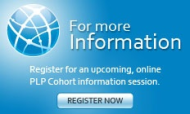“Resisting change in your life wastes valuable energy. When people focus on stopping the change rather than being open and trying to understand the change they are missing opportunities”.
In September a team of people from my district began a year long job embedded professional development opportunity through Powerful Learning Practice, “a professional development model that immerses educators into environments and practices that allow them to learn and own the literacies of 21st Century learning and teaching”.
I have struggled in the past several years with how to move conversations forward in terms of teaching and learning with 21st century skills. Many times I have felt when I speak of 21st century skills in education others automatically think of using computers more, when in reality, the technology is not the focus, it is merely a tool to be used to assist in the process or shift in teaching and learning. My hope is through our districts participation in PLP, we as a team, will begin to understand the shifts and see value in understanding the work of the Partnership for 21st Century Skills, and enGauge 21st Century Skills, to begin to see connections between our district goals and the incorporation of digital literacies, inventive thinking, effective communication, and high productivity. Our work is taking place for the most part in virtual spaces, using Ning for our collaborative work space and conversations. The learning curve, getting everyone comfortable in this space has taken time, and not everyone is comfortable yet, but all have been willing to try. The conversations taking place, the tools that have been introduced, the time required to read, think, respond have been obstacles to overcome and figure out how to manage for all of us. Asking ourselves how do these conversations fit into our district philosophy and direction, determining if they do all have relavance, and knowing it is up to each of us to understand how and where they fit into our teaching/learning practice. Everyone involved in this project are stretching the limits of how they are comfortable learning, and I believe all of our team members are being open and trying to understand the shifts.
My hope is at the end of this project I will have others who feel as passionately as I do about the changes we need to make in education, to embrace the shifts in pedagogy we are learning about and involve others in our district on this journey. We can’t afford to waste our energy or miss opportunities because we are complacent and disinclined to change.
How are your colleagues when it comes to change, learning new things? Are they willing and at the forefront of shifts in educational pedagogy?



